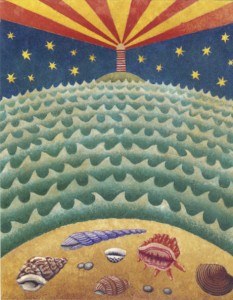Making Waves
 Continuing from yesterday’s post on Dependent Origination:
Continuing from yesterday’s post on Dependent Origination:
One of the DPP homework readings is a transcript of a talk given by Christina Feldman, in which she explains sankhara as “the way ignorance takes form, takes a particular shape or a particular activity–almost the way it rises out of being invisible or unconscious into a more generated or active form that can actually be seen–in body, speech, or mind.”
Sankhara is usually translated as “volitional formations,” but what the heck does that mean? In Kamma and the End of Kamma, Ajahn Sucitto describes sankhara as “behavioral patterns or programs,” and in a recent series of talks I’ve been listening to lately, he uses emotional and psychological “wave formations.” Which I really like because it’s so visual.
As I understand it, sankhara are “things/processes that have come together as a result of past actions, intentions, habits, preference and opinions.” It’s not the most elegant translation, I’ll concede. So I think for the homework assignment, I’ll go with “mental, verbal and bodily wave patterns.”
(image: this is from another one of those cards I’ve had in my desk for years. I have no idea who to credit.)

[…] will appear differently to different people, depending on each person’s consciousness and the sankharas (psychological waves or habit patterns) that are present. AND, because everything is […]